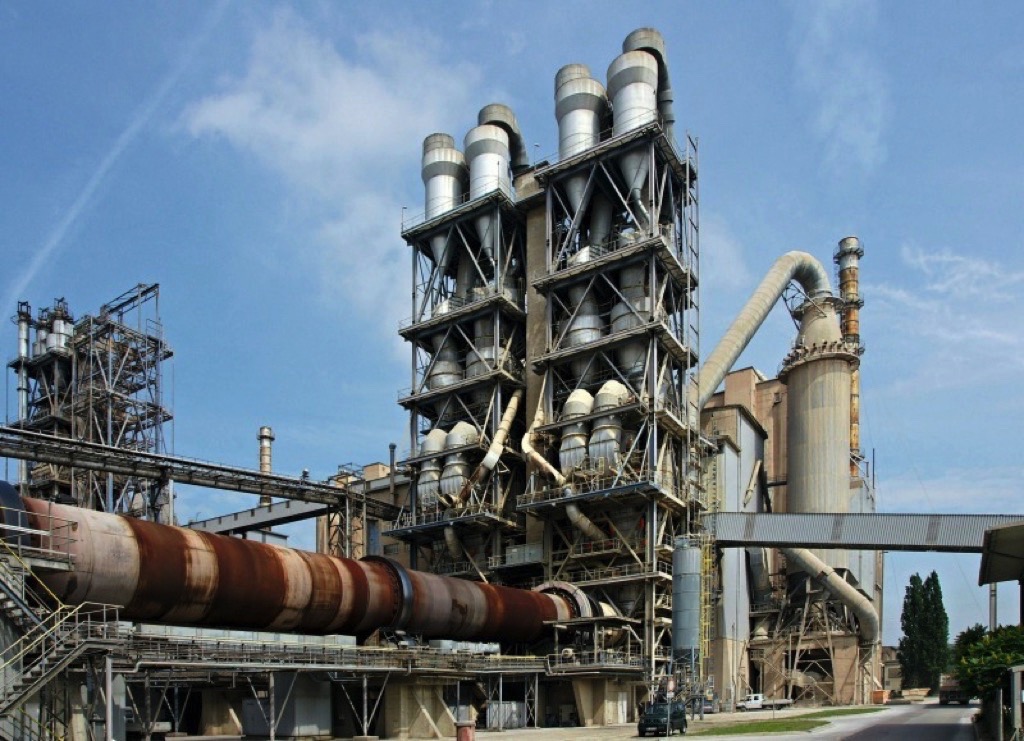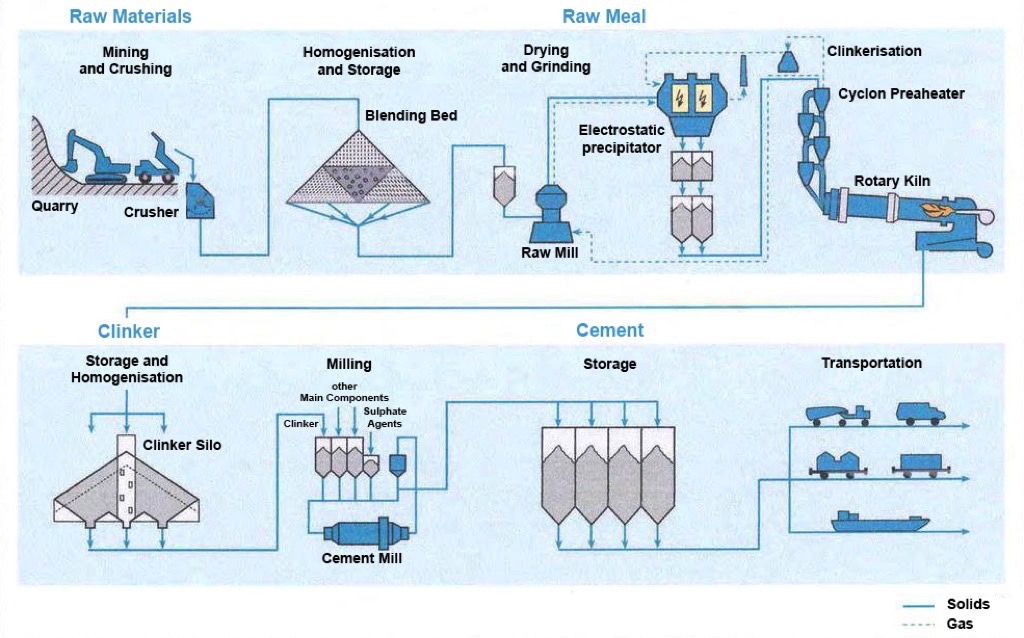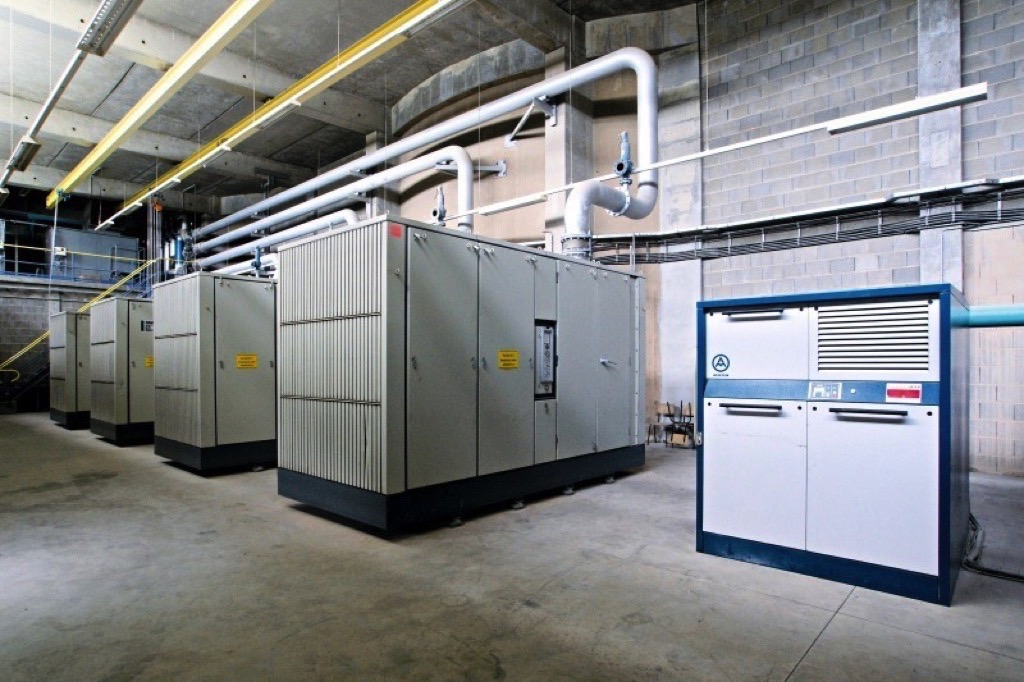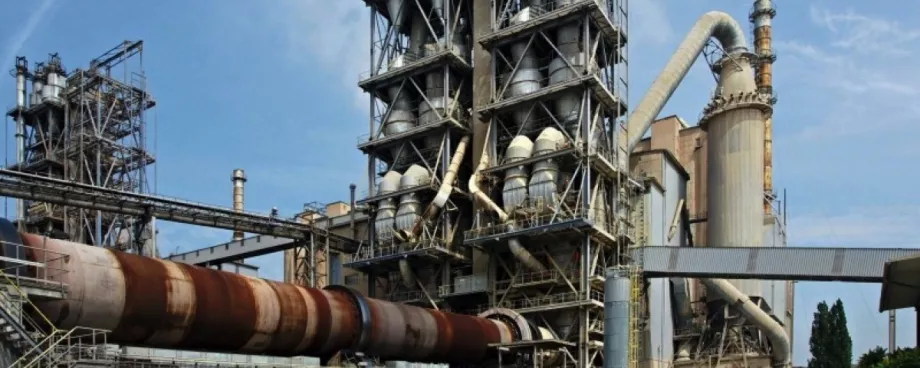(From the archive of ”bulk solids handling", article published in Vol. 32 (2012) No. 5 , ©2012 bulk-online.com)

The Lafarge cement plant in Karsdorf, Germany, is a good example for the manifold application of compressed air in the cement industry. In this plant, more than 50 screw compressors and positive displacement blowers of Aerzener Maschinenfabrik ensure a production process free from interferences for this complete application range. Four screw compressors and positive displacement blowers operate as central station in a large hall. The other units were installed decentralised. one of these blowers in the central station comes from the new Aerzen series Delta Hybrid. For the first time, this series combines the advantages of a positive displacement blower and a screw compressor to a new compressed air concept. This is why the manufacturer created the name “rotary Lobe Compressor”. Outstanding property of the series Delta Hybrid is the maximum possible pressure up to 1.5 bar with continuous operation.
Compressed Air Everywhere
The raw material limestone necessary for the production of cement is found at Karsdorf in the company’s owned open cast mining very close to the cement plant. Then it is stored and ground together with other additives in the raw mill. The material is then ground to fine flour and transferred pneumatically into the raw meal silos for further homogenisation. Thereafter, a new product, the cement clinker, is produced in the kiln by a chemical conversion, the so-called sintering. The cooled clinker is stored in clinker silos and then it is mixed with other additives depending on application, afterwards ground to very fine cement in the cement mills and mainly removed by silo trucks.
In Karsdorf nothing happens without compressed air: compressed air for the pneumatic raw meal transport but also for loosening and mixing (homogenisation) in silo plants. This compressed air is generated by either oil-free compressing and air-cooled screw compressors (pressure range depending on application 2.6 to 3.3 bar) or by oil-free compressing and air-cooled positive displacement blowers (maximum pressures 0.6 to 0.8 bar).
In the past positive displacement blowers had been the ideal producer of compressed air up to a maximum pressure of 1 bar. They have proved to be of value in this pressure range and for most different applications even in continuous operation under extreme conditions for decades in many industries as producer of absolutely oil-free compressed air. but so far 1 bar maximum pressure for positive displacement blowers has been the end of the line. because of this, oil-free compressing screw compressors had to be applied for the pressure range of 1 bar to 1.5 bar, a range very often asked for. This is why designers at Aerzener Maschinenfabrik created a completely new compressed-air production concept with the development of the new series Delta Hybrid. With the new packed units of this series compressed air can now be produced for the first time for the difficult pressure range of 1.0 to 1.5 bar in the most reliable and economic way besides the common application for the range up to 1.0 bar maximum pressure. These packed units had been developed to series production readiness under real field conditions for several years. A packed unit of the series Delta Hybrid has been operating continuously since February 2007 in the cement plant in Karsdorf and has proven to be of value even under the extreme conditions of the cement industry.

The cement plant in Karsdorf has three kiln lines, two of them are currently active and named internally line 3 and 4. The compressed air has two central tasks in this production chain: to loosen and to homogenise the raw meal in the silo plant, to transfer it via dosing system into conveying systems and pneumatically as well – transport the raw meal via piping systems to the kilns. The compressed air required in both operation ranges is generated by air-cooled packed units of Aerzener Maschinenfabrik all installed in a big hall.
- The compressed air required for loosening of the raw meal in the storage silo and for homogenisation is provided by two packed units operating continuously; a positive displacement blower and a packed Delta Hybrid unit. A third blower is provided as redundancy; a fourth packed unit is available for other tasks. All four packed units operate in the pressure range of 0.6 to 0.8 bar.
- The compressed air required for the raw meal transport and for another homogenisation is provided by four big oil-free compressing air-cooled screw compressors type VM 537 (quantity delivered 96.00 m3/min each; pressure range 2.6 to 3.3 bar depending on demand): one compressor supplies the compressed air for the transport, two packed units produce the compressed air for the uniform mixing of the materials and one screw compressor is hold available as redundancy. Since commissioning these four plants have operated 114,900 hours, 117,800, 34,500 resp. 38,400 hours (as of June 2010).
All positive displacement blowers and screw compressors operate with constant speed and state-of-the-art technology at their com-missioning. Meanwhile, speed-controlled plants have prevailed in many fields as they only produce the quantity of compressed air actually required. This is why these plants controlled by frequency converters operate with even higher energy efficiency in many applications than plants with fixed speed. Dipl.-Ing. Günther Schlimm, group leader Technical Supply Facilities in the factory Karsdorf, is convinced “that we therefore will carefully check in case of an investment for new Aerzen blowers and compressors whether we will prefer a speed-controlled plant or a plant with constant speed.”
Rotary Lobe Compressors
In February 2007, Aerzener Maschinenfabrik sent a quotation to the cement plant in Karsdorf for a packed unit from the newly developed series Delta Hybrid for testing purposes. To achieve the maximum possible degree of capacity utilisation this packed unit was directly integrated into a kiln line where the supply can be converted to a redundancy packed unit in the event of an accident or emergency. “This new test blower has been operating continuously without any difficulties from the very start-up more than 3 years ago and supplies compressed air with maximum pressure 0.8 bar”, Günter Schlimm reports. Until then three of the four existing Aerzen positive displacement blowers operated for the loosening and homogenisation process of the raw meal in the silo according to the following scheme:
- One blower each was allocated to one of the two kiln lines producing the compressed air required in this range for loosening and homogenisation of the cement meal in the silo.
- The third packed unit was hold available in reserve and could provide the kiln line 3 and kiln line 4 as well if necessary.
In principle, this concept still applies today, but the commissioning of the new Delta Hybrid blower in February 2007 brought the instant decommissioning of the old main packed unit of a kiln line.
Worldwide Novelty
This Delta Hybrid packed units are a worldwide unique new concept of Aerzener Maschinenfabrik. So far, conventional positive displacement blowers could only achieve pressures up to a maximum of 1 bar. Single-stage screw compressors had to be applied that are designed for considerably higher pressures of 2 resp. 3.5 bar. Thanks to the design they are much too good for lower pressures and therefore, this seems to be a too expensive investment. With the new oil-free compressing Delta Hybrid units a real symbiosis has been created.

These two systems are an ideal combination with plenty of advantages. The new packages have been designed for all applications where air and neutral gases are conveyed up to 1.5 bar, e.g. in sewage plants, in the chemical industry, the power plant technology or for the transport and unloading of powdery material. This new rotary piston series have been successfully tested since three years within a big field test. This test referred to various branches, addressed to Aerzen customers under consideration of new requirements at roughest practical conditions. All field test units have been monitored by Aerzen remote control RAT in detail and continuously. The new units are available in the following rating ranges:
- Volume flows: 10 to 70 m3/min (600 to 4200 m3/h)
- Fields of application: For air pressure, over pressure and vacuum pressure
- Pressure range: 0 to 1.5 bar
- Intake range: up to -0.7 bar
The new Delta Hybrid-series is absolutely comparable with turbo compressors, but due to the customised design principle offers the key advantages of a positive displacement machine compared with the turbo technology:
- Especially favourable price performance-ratio considerably below the investment, energy and maintenance costs for a comparable turbo or screw compressor.
- Insignificant capacity fluctuations compared with a turbo compressor even at different intake temperatures (summer-/winter operation) or at pressure fluctuations.
- Significantly improved energy efficiency by energy savings up to 15 percent compared with usual units.
- Low maintenance and service costs.
- Solid bearing design (durability 60,000 operating hours, also with maximum load).
- Low compressed-air discharge temperatures thanks to excellent thermal budgets, compact dimensions, belt drive, belt tension by hinged motor mounting plate, side-by-side installation, front-side operation, oil inspection and refilling during operation, low noise level, optional control AS300 AERtronic, appropriate for external installation;
- Very high control range (25 to 100 percent), easy to operate and to maintain.
Service for the Aerzen screw compressors and positive displacement blowers installed in the cement plant Karst has not been contracted. General maintenance work is performed by own personnel. Only extensive revisions and maintenance work are performed by Aerzen service technicians.
Proven right from the Start
“Compressed air is particularly often used for transport processes in our cement plant in Karsdorf. The only way to ensure production without interferences and to offer our products at marketable prices is the operation of a reliable and economically operating compressed-air supply. The quality of the screw compressors and positive displacement blowers operating in our factory is therefore of vital importance. The fact that more than 50 packed units of Aerzener Maschinenfabrik are operating in our plant in Karsdorf demonstrates our satisfaction with this product. That applies to the new unit of the series Delta Hybrid too, continuously in use since February 2007. Although this packed unit had been used as test plant first, it has shown good results in continuous operation from the very start," the supply expert Schlimm of Karsdorf Zement states.
A Note from the Editor
For all statements in this article that refer – directly or indirectly – to the time of publication (for example “new”, “now”, “present”, but also expressions such as “patent pending”), please keep in mind that this article was originally published in 2012.
| About the Author | |
| Norbert Barlmeyer
Technical Writer for Aerzener Maschinenfabrik, Germanyy |
■




















